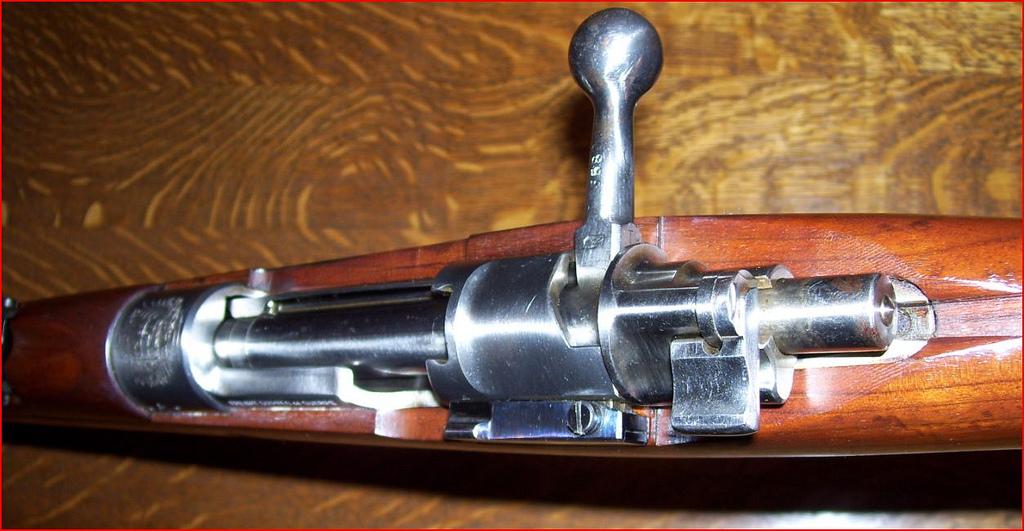


No actual production records have been found. 1907 using parts left over from the Portuguese contract. It is believed that DWM built around 5,000 M1904 rifles chambered in 7 mm. The ricasso marking is the Brazilian national crest, over "F.P.D.F." (Força Pública Distrito Federal). The M1904 was adopted by Brazil for use by the paramilitary police force in the (then) national capitol of Rio De Janeiro. M1904 bayonets have a shorter hilt than M1908 and later Mauser bayonets, so only fit on M1904 Mauser rifles.
Fn Belgian Mauser Serial Numbers how to#
If so, it is unclear how to distinguish between Brazilian and Uruguayan examples of this bayonet. Research published in 2016 by Anthony Vanderlinden in his book, FN Mauser Rifles, infers that this bayonet may have been made for Brazil. Spanish Mauser ( le Mauser espagnol) rifles made for export, to Uruguay and Brazil. Knife bayonet for use with Fabrique Nacionale (FN) 7 mm. Although sub-scale, the blade length of 18 1/4" is much longer than any of the Brazilian cadet bayonets."Ĭlick on the image to view information and additional images on the Uruguay Page. The only cadet Chassepot bayonet I have, that I am certain is actually French is stamped "ANDREUX PARIS" on the obverse ricasso. I bought a handful from Martin out of his old mail-order list back in "the good old days" for $2.50 each. I have never seen one mounted on its companion firearm. Some are said to be for an artillery carbine, but most appear to be very small cadet bayonets for assorted Comblain (not Chassepot) rifles.

I have seen at least a dozen different variations, with several blade lengths and several hilt sizes. Martin Retting, who imported these many years ago (mid-1960s I think), stated that they all came from Brazil. For many years, we thought these were French cadet versions of the M1866 Chassepot. "The references in Janzen's Notebook cover this item best. Jim Maddox (author of Collecting Bayonets), wrote to me, indicating: When I found this piece, noted bayonet collector, Dr. The double-curve added strength and rigidity, while keeping the hilt and point in alignment for thrusting efficiency. "Yataghan" is derived from the Turkish word for "one who lays down" to describe the downward-sweeping double-curve blade profile. The picture at lower left shows this bayonet next to a French M1866 bayonet to provide a size comparison. These bayonets likely date from the 1880s.

Very well made, with good attention to detail. 13-3/4" length of pull fine oil-finished Walnut stock sports tasteful checkering, cross-bolting, beautiful FN logo horn butt, horn grip cap, silver initial shield inlaid between grip cap and sling swivel and cheekpiece for right-handed shooter.A diminutive yataghan sword bayonet for a scaled-down rifle, as would be used in a military boarding school for young boys. Round bridge reciever has the desireable, early "non-left-side extractor cut" and is topped with steel Warne Scope bases, Leupold rings and Leupold VXIII 1.5X5 scope. Rear sight has one standing, two folding leaves. Heavier than usual (for 7x57 sporter) 24" barrel retains what I consider a perfect bore and chamber, banded sling swivel and rear express sight base. The metal work retains nearly all factory "rust blue" with only barely detectable wear on high edges. Serial #370 places this rifle within the first few months of production, and the fine fit and finish demonstrates a high level of pride from the factory craftsmen at that time. Well, here is one of their first rifles, and this one is GREAT. From my research, when FN (Belgium) began manufacturing Mauser 98 rifles in the 50's, they quickly realized what a Herculean task that was! They quickly reduced the number of machining steps to lower costs and the result was a rifle that was OK, but not great, like the German version was.


 0 kommentar(er)
0 kommentar(er)
